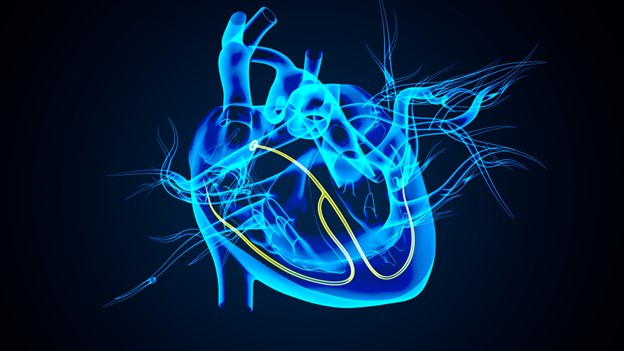Pericardial effusion is when fluid gathers in the space around the heart, called the pericardial sac. This build-up can put pressure on the heart, making it work harder. If not managed, it can lead to serious issues like cardiac tamponade, where the heart can’t pump well, or even heart failure. Recognizing and managing these fluid build-ups around the heart early can help prevent these dangers and keep the heart healthy. A timely diagnosis and understanding of this condition are critical.
Understanding the signs and risks of fluid around heart symptoms is vital for early intervention. Early attention can prevent serious outcomes and ensure better heart function over time. Proper knowledge of pericardial effusion helps in seeking treatment early and protects heart health from severe complications.
Recognizing Fluid Build-Up Around the Heart: Symptoms and Causes
The symptoms of having fluid build up around heart can vary. Some common indicators include shortness of breath, pain in the chest, and feeling tired. Some people may have these signs suddenly, while others might notice them slowly over time. When fluid accumulates gradually, the symptoms might not be immediately apparent.
Several things can cause fluid build up around heart. These causes include:
- Infections, like bacteria or viral infections.
- Trauma, such as injuries to the chest.
- Cancer therapies, especially treatments affecting the heart area.
- Kidney failure, where waste products are not properly eliminated and affect heart health.
- Autoimmune disorders, where the body’s immune system attacks its own tissues.
Understanding both the symptoms and the potential causes is essential. When people know what to look out for, they can seek help sooner. This knowledge encourages quick action, which can avoid long-term health issues caused by delayed treatment.
Diagnosis and Treatment Options for Pericardial Effusion
Diagnosing pericardial effusion involves several steps. Doctors will review a person’s medical history and conduct tests. Common tests include imaging, like echocardiograms, to see how much fluid is around the heart. Additionally, blood tests might be done to find the cause of the fluid build-up.
How is fluid around the heart treated? The answer depends on how much fluid is present and the underlying cause. Here’s what might happen:
- Medication: Doctors may prescribe anti-inflammatory drugs or antibiotics. These help reduce inflammation or eliminate infections causing fluid accumulation.
- Procedures:
- Pericardiocentesis: Where doctors use a needle to remove excess fluid.
- Creating a Pericardial Window: A small surgery that helps drain fluid faster if it returns.
- Monitoring: For mild cases, careful watching, along with lifestyle changes, might be enough. It’s crucial to target the root problem, which might involve regular follow-up visits and tests.
How do you treat fluid around the heart naturally? While natural methods cannot replace medical treatments, maintaining a heart-friendly lifestyle is beneficial. How do they treat fluid around the heart? By using both medical interventions and healthy lifestyle choices, patients can manage their condition effectively.
Living with Pericardial Effusion: Prevention and Lifestyle Recommendations
For those with a history of pericardial effusion, regular doctor visits are essential to avoid seeing the fluid return. These check-ups help manage ongoing symptoms and detect any changes early.
Healthy habits can also make a big difference:
- Balanced Diet: Eating heart-friendly foods, like fruits, vegetables, and whole grains, helps maintain heart health.
- Regular Exercise: Staying active supports overall cardiovascular health and reduces the risk of future problems.
When individuals understand how to treat water around the heart naturally, they can complement medical treatments with positive lifestyle adjustments. Recognizing the need for diet and activity changes can preserve heart health and prevent further complications.
By understanding the importance of early intervention and maintaining changes in lifestyle, individuals protect their heart’s well-being. Understanding how do you treat fluid around the heart emphasizes a blend of medical care and habitual changes, reinforcing the importance of comprehensive management.
In conclusion, knowing the signs, causes, and treatments of pericardial effusion is crucial for anyone concerned with heart health. Proper education leads to proactive measures, helping individuals maintain a healthy heart and improved quality of life.

